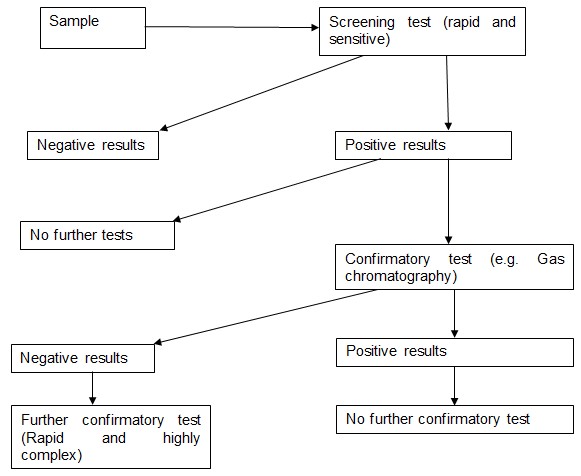Introduction
Urinalysis is concerned with determining the type and amount of substances in the urine of human beings. Toxicology is a branch of biology that concentrates on determining the poisonous effects produced to body organs by substances. The substances may either be legal or illegal. Toxicology is concerned with determining the substances, their physiological adverse effects, their dosages, routes of administration and routes of elimination. Urine has become a very useful sample in toxicological tests. Many toxicologists and forensic scientists use urine to test for poisonous agents in living or dead persons. Urinalysis in toxicological tests is common because the tests are cheap to conduct (Vaglienti, Huber, Noel & Johnstone 2003). Also, research demonstrates that all substances that get into the body are eliminated through urine. Therefore, there is a very high chance that a poisonous substance suspected to have been taken by a victim will be found in their urine.
Urinalysis substances of interest in toxicology
Urinalysis measures specific substances in urine. If the substances are above the normal concentrations acceptable by the laboratory standards, then toxicologists can conclude that the high amounts of the substances could be responsible for the identified abnormal physiological functions (Jones 2006). Among the substances that toxicologists test in urine include cell debris, ions and trace metals, proteins, enzymes and other molecules defined by toxicological parameters.
Methods
Specific urine toxicology tests
- Screening tests
These are highly sensitive and rapid tests used to test for testing for poisonous substances in urine. If a sample is found to be positive for a given substance, then toxicologists usually repeat the test to confirm the results. One of the methods falling under this category is thin layer chromatography (TLC) and spectrometry. They accommodate testing of many samples at once. Immunoassay procedures are also used to test poisonous substances in urine when only a small sample is available. Immunoassay procedures involve enzyme-based tests that are rapid and sensitive (Van Bocxlaer et al 2000).
- Confirmatory tests
These tests involve repeating tests of a sample with a different test procedure to confirm results obtained from a test conducted earlier. The two mostly used procedures are the gas chromatography and spectrometry. The two tests are very specific and sensitive.
Forensic urine drug testing
Forensic science is continuously being in legal cases to provide scientific-based evidence in legal suits. Urine is collected, stored and analysed by forensic scientists to determine the level of toxic substances in poisoned persons (Jones 2006).
Diagrammatical representation of a drug urinalysis

References
Jones, AW, 2006, “Urine as a biological specimen for forensic analysis of alcohol and variability in the urine-to-blood relationship”, Toxicological reviews, Vol. 25, No. 1, pp. 15-35.
Vaglienti, RM, Huber, SJ, Noel, KR & Johnstone, RE, 2003, “Misuse of prescribed controlled substances defined by urinalysis”, The West Virginia medical journal, Vol. 99, No. 2, pp. 67.
Van Bocxlaer, JF, Clauwaert, K.M, Lambert, WE, Deforce, DL., Van den Eeckhout, EG, & De Leenheer, AP, 2000, “Liquid chromatography—mass spectrometry in forensic toxicology”, Mass spectrometry reviews, Vol. 19, No. 4, pp. 165-214.